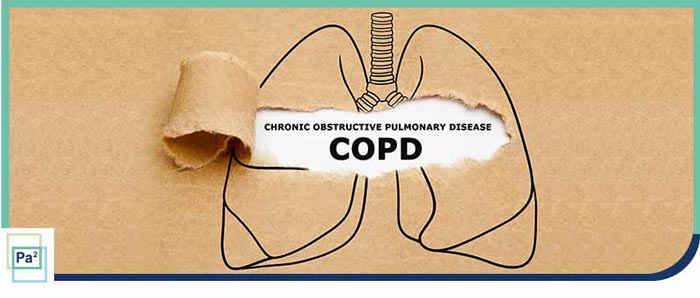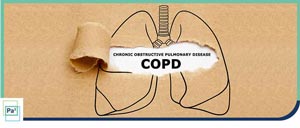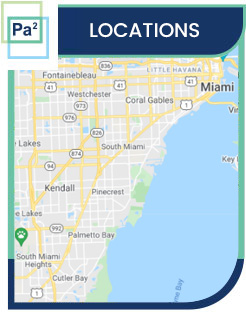Chronic Obstructive Pulmonary Disease (COPD) Specialist Q&A
Chronic Obstructive Pulmonary Disease, or COPD, is a permanent and serious lung disease. At Piniella Asthma + Allergy, our board-certified allergist Dr. Carlos Piniella, MD can diagnose and treat COPD and help you improve your quality of life. Contact us for more information or schedule an appointment online! We have convenient locations to serve you in Coral Gables FL and Palmetto Bay FL.


Table of Contents:
What is Chronic Obstructive Pulmonary Disease?
What are the early warning signs of COPD?
What happens to your lungs when you have COPD?
Where do I find the doctor to treat COPD in Miami?
Chronic Obstructive Pulmonary Disease (COPD) is a name for a group of long-term lung diseases. The main types of COPD are chronic bronchitis and emphysema. Both of these conditions are caused by long-term exposure to irritants, primarily from smoking tobacco, but sometimes also from second-hand smoke, air pollution, or fumes from chemicals. There are also some genetic conditions that make people more likely to develop these diseases.
When someone has chronic bronchitis, the lining of their lungs and airways are permanently inflamed and swollen. They develop large amounts of mucus, which they will cough up. It will be difficult to breathe.
Emphysema is damage to the walls of the air sacs, which makes them unable to fully deflate. This means air is trapped in the lungs and people can’t exhale completely. This also means that the exchange of oxygen and carbon dioxide in their blood is not functioning properly.
COPD is described by stages of severity. Patients with Stage 1, or mild COPD may have a chronic cough, may occasionally cough up mucus, and have mild airflow limitations. In Stage 2, or moderate COPD, patients begin to experience shortness of breath when exercising. Stage 3, or severe COPD patients have increased shortness of breath and reduced tolerance for exercise. The disease is beginning to affect their quality of life. With Stage 4, or very severe COPD, airflow is severely limited, and quality of life is greatly diminished. Symptoms can also be life-threatening at this stage.
Many people don’t notice symptoms of COPD until they reach Stage 2. Early warning signs include:
• A cough that doesn’t go away
• A cough that produces mucus
• A feeling of tightness in the chest
• Wheezing, whistling, or squeaking when breathing
Fatigue
• A feeling of shortness of breath, especially when exercising.
With severe COPD, patients may have reduced strength and stamina, even when walking short distances. They may have swelling in their legs, ankles, and feet, and they may lose weight unintentionally. Patients may have flare-ups, where symptoms get worse suddenly for a short time, usually triggered by exposure to cigarette smoke, irritants in the air, chest infections, or respiratory illnesses.
COPD is most common in people aged 65 or older, current or former smokers, and people who also have asthma. COPD is more common in females than in males, and females who have severe COPD are more likely to be hospitalized or die of respiratory failure.
Our windpipe divides the chest into two branches, which then divide into many smaller branches. At the end of the tiniest branches, there are small air sacs, called alveoli. These alveoli have thin walls with tiny blood vessels in them that allow oxygen that we breathe in to pass into the blood, and carbon dioxide to pass through out of the blood, to be exhaled out of the body.
In a person with normal lungs, the walls of the alveoli are very stretchy to allow them to inflate and deflate as the person breathes in and out.
In a person with COPD, the elasticity of the alveoli is lost, and they become damaged. They don’t deflate fully, resulting in incomplete gas exchange which causes a feeling of shortness of breath and exhaustion. The walls of the larger branches of the airways also become swollen and inflamed, and they produce more mucus. The airways become sensitive and clogged, resulting in coughing and difficulty breathing.
COPD doesn’t go away, but there are treatments and lifestyle changes that can help slow down the progression and help patients feel better. First, COPD patients should quit smoking. They may also benefit from changes to nutrition. Pulmonary rehabilitation therapy teaches breathing techniques to help with symptoms. Preventing respiratory illnesses like colds and flu is important, and patients should receive all available vaccinations. A doctor can prescribe inhalers that help with dilating the bronchial tubes and reducing inflammation. Supplemental oxygen through a mask or nasal tubes may be needed. In some very severe cases, surgery may be required to remove damaged tissue or transplant a new lung.
The respiratory specialists at Piniella Asthma + Allergy in Coral Gables and Palmetto Bay, FL diagnose and treat all respiratory conditions, including COPD, asthma, and allergies. If you think you may have COPD, call for an appointment today, or request an appointment online. We serve patients from Coral Gables FL, Palmetto Bay FL, Westchester FL, Brownsville FL, Kendall FL, Pinecrest FL, Richmond West FL, and Goulds FL.

Additional Services You May Need
▸ Asthma
▸ Allergy Testing
▸ Food Allergies
▸ Immunotherapy
▸ Patch Testing
▸ Allergy Treatment
▸ Pediatric Asthma Specialist
▸ Pediatric Allergist
▸ Insect Bite Allergy
▸ Drug Allergy
▸ Seasonal Allergies
▸ Skin Allergy

Additional Services You May Need
▸ Asthma
▸ Allergy Testing
▸ Food Allergies
▸ Immunotherapy
▸ Patch Testing
▸ Allergy Treatment
▸ Pediatric Asthma Specialist
▸ Pediatric Allergist
▸ Insect Bite Allergy
▸ Drug Allergy
▸ Seasonal Allergies
▸ Skin Allergy


